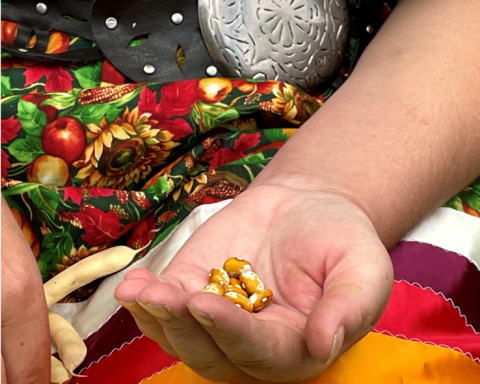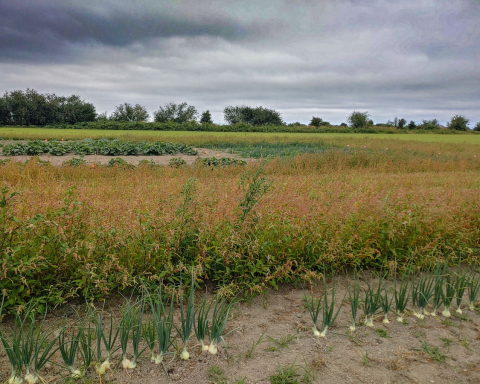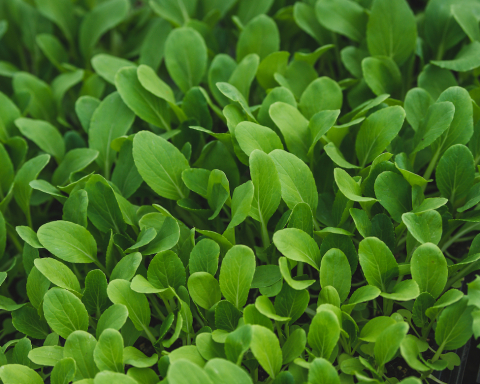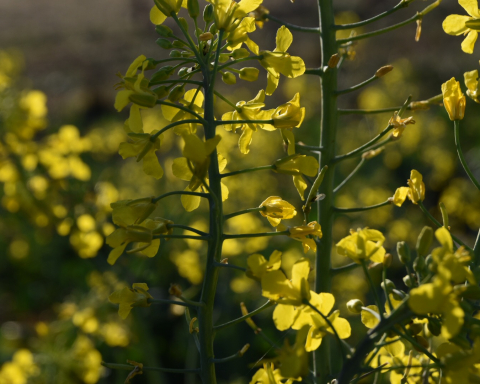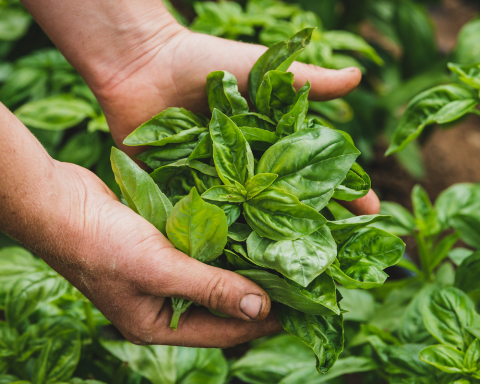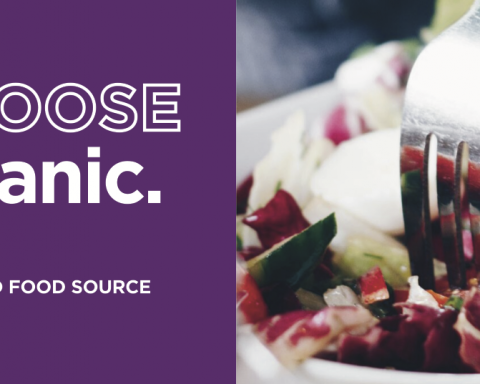Empowering the Human Micronutrient Supply Chain from the Soil Up
Marjorie Harris
I have long accepted that the saying “Healthy Soil, Healthy Plants, Healthy people” fully explained the human nutrient supply chain. Turns out, this is not entirely accurate. In fact, the mineral requirements for healthy plants, animals, and people are quite different.
During organic farm inspection tours, I met a BC farm family diagnosed with selenium deficiency syndromes. The local health unit had identified the conditions. One person suffered from a significant fused spinal curvature from a skeletal muscle disease caused by selenium deficiency.
The farm’s soil tests confirmed that the garden soils were indeed deficient in selenium. The farmer was aware that his newborn livestock required selenium shots to prevent white muscle disease and that his livestock were fed selenium-fortified commercial organic livestock feed.
That BC farmer’s “Aha!” moment came when he made the connection between his garden soils’ lack of selenium and his family’s health problems. My curiosity was piqued. What was going on here—what is selenium and where do we find it?
Selenium is recognized as an essential trace mineral for healthy livestock and it is standard best practice to give selenium shots shortly after birth. In the year 2000, the Canadian government, along with the rest of North America, mandated the addition of selenium minerals to commercial livestock feeds (poultry, swine, beef/dairy, goat, and sheep) as a way to increase animal health and fortify the human food supply in dairy, meat, and eggs. Canadian wildlife surveys have determined that wild creatures also suffer from selenium deficiency diseases. Chronic and subclinical selenium deficiency could be a contributing factor to recent wildlife population declines, as other causes have not been identified.
I was surprised to learn from the government of Alberta’s Agri-Fax sheet that plants do not use selenium and do not show deficiency symptoms from its lack in the soil. At the same time, there are a few plants, such as locoweeds, that can hyperaccumulate selenium to levels that are toxic to livestock when selenium concentrations are high in the soil.
It was only relatively recently that we realized selenium was essential for human health. In 1979, Chinese scientists made the discovery while investigating the deaths of thousands of young women and children in the Keshan County of North Eastern China. The condition associated with these deaths was named Keshan disease, after the county where it was first recognized. The Chinese scientists discovered that selenium supplementation could correct the disorder. Since then, much has been learned about how selenium acts as a mineral in the human body in conjunction with other trace minerals such as chromium and iodine, which are also not used by plants.
Selenium deficiency is regarded as a major worldwide health problem with estimates of between 500 million to 1 billion people living with selenium deficiency diseases. Even larger numbers of people are consuming less then what is needed for optimal protection against cancer, cardiovascular diseases, and infectious diseases.
Researchers have found that selenium is widely distributed throughout the body’s tissues and of high importance for many regulatory and metabolic functions. Selenium is very much like a “Goldilocks” micronutrient: you need just the right amount. Too much or too little can lead to serious health consequences. The Recommended Daily Amount (RDA) in Canada for adults and children 14 and up is 55 micrograms per day. Our dietary selenium is taken up in the gut and becomes incorporated into more than 30 selenoproteins and selenoenzymes that play critical roles in human biological processes. Selenium is considered a cornerstone of the body’s antioxidant defense system as an integral component required for glutathione peroxidase (GPx) activity. The GPx enzyme family plays a major role in protection against oxidative stress.
In addition, selenoproteins regulate many physiological processes, including the immune system response, brain neurotransmitter functioning, male and female reproductive fertility, thyroid hormone functioning, DNA synthesis, cardiovascular health, mental health, and heavy metal chelation. Selenoproteins have a protective effect against some forms of cancer, possess chemo-preventive properties, and regulate the inflammatory mediators in asthma.
Many chronic diseases have been linked to selenium deficiency. A short list includes: diabetes, Alzheimer’s, lupus, autoimmune disease, arthritis, schizophrenia, cardiovascular disease, degenerative muscle diseases, neurological diseases, and rheumatoid arthritis. The selenium GPX-1 immune defense system has demonstrated antiviral capability. GPx-1 is found in most body cells, including red blood cells.
Some lipid-enveloped viruses pirate host selenium resources as a strategy to outmaneuver the host immune selenium-activated GPX-1 antioxidant system. If a host is selenium-deficient the virus can overwhelm the host GPX-1 immune response. In selenium-competent individuals the GPX-1 initiates an immune response cascade which inhibits viral replication and clears the virus from host. Selenium’s antiviral defense ability has been documented for Ebola, coronavirus, SARS-2003, influenza viruses (swine and bird flus), HIV, herpes viruses, cytomegalovirus (CMV), Epstein-Barr virus (EBV), hepatitis B and C, Newcastle disease virus, rubella (German measles), varicella (chicken pox), smallpox, swine fever, and West Nile virus. There are a number of studies showing that selenium deficiency negatively impacts the course of HIV, and that selenium supplementation may delay the onset of full-blown AIDS.
While the research is still unfolding and it is too early to make determinative conclusions about COVID-19 and potential treatments, preliminary research indicates several interesting lines of inquiry. COVD-19 researchers in China published new data on April 28, 2020 making an association the COVID-19 “cure rates and death rates” and the soil selenium status of the region. Higher deaths rates were observed in populations living inside soil selenium-poor regions such as Hubei Province. Regional population selenium status was measured through hair samples. Samples were collected and compared from 17 different Chinese cities: “Results show an association between the reported cure rates for COVID-19 and selenium status. These data are consistent with the evidence of the antiviral effects of selenium from previous studies.”

By now, you’ve probably figured out that we can’t live without selenium. The evidence is clear: human and animal health is dependent on selenium, and yet it is the rarest micronutrient element in the Earth’s crust. Selenium is classed as a non-renewable resource because there are no ore deposits from which Selenium can be mined as the primary product. Most selenium is extracted as a by-product of copper mining.
Selenium has many industrial applications because of its unique properties as a semi-conductor. The most outstanding physical property of crystalline selenium is its photoconductivity. In sunlight electrical conductivity increases more than 1,000-fold, making it prized for use in solar energy panels and many other industrial uses that ultimately draw selenium out of the food chain, potentially permanently.
Selenium is very unevenly dispersed on land masses worldwide, ranging from deficient to toxic concentrations, with 70% to 80% of global agricultural lands considered to be deficient. Countries dominated by selenium-poor soils include Canada, Western and Eastern European, China, Russia, and New Zealand. Worldwide selenium-deficient soils are widespread, and increasing.
Naturally selenium-rich soils are primarily associated with marine environments. Ancient oceans leave behind dehydrated selenium salts as they recede. Here in Canada the receding salt waters of the Western Interior and Hudson seaways left mineral deposits from the Badlands of Alberta, following along the southern borders of Saskatchewan and Manitoba.
Some countries, including Finland and New Zealand, have added selenium (selenite) to fertilizer programs to fortify the soils with some success. Results show that only a small proportion of the selenium is taken up by plants and much of the remainder becomes bound up in non-bioavailable complexes out of reach for future plant utilization. On this basis, it is thought that large scale selenium biofortification with commercial fertilizers would be too wasteful for application to large areas of our planet. The geographic variability of selenium content, environmental conditions, and agricultural practices all have a profound influence on the final selenium content of our foods. Iodine, which works hand-in-hand with selenium, is even more randomly variable in soils and food crops.
The Globe and Mail ran the following January 2, 2020 headline: “Canadian researchers combat arsenic poisoning with Saskatchewan-grown lentils.” In 2012, it was estimated by the WHO that 39 million Bangladeshis were exposed to high levels of arsenic in their drinking water, and the World Health Organization (WHO) deemed Bangladesh’s arsenic poisoned groundwater crisis the “largest mass poisoning of a population in history.” As it turns out, the lentils from southern Saskatchewan accumulate enough selenium that they could be used as a “food-medicine” in Bangladesh as a cure for arsenic poisoning. Clinical trials conducted from 2015 to 2016 found that participants eating selenium-rich lentils had a breakthrough moment when urine samples confirmed that arsenic was being flushed from their bodies. Other studies have also shown that selenium binds to mercury to remove it from the body.
Now that we are finally wrapping our minds around the fact that our personal health depends on just the right amount of selenium, we find out that the health of future generations may depend on it even more. It takes more than one parent’s generation to produce a single child. While a female fetus is growing in the womb, the eggs of the gestating mother’s grandchildren are also being formed in the ovaries of the fetus. The viability of the grandchildren’s DNA is protected from oxidative stress damage by antioxidant selenium. Oxidative stress on the new DNA could potentially result in epigenetic changes for future generations. The selenium intake of the grandparent directly affects the grandchildren. From this point of view, it is seen as imperative that all childbearing people have access to sufficient selenium. Selenium is essential for healthy spermatogenesis and for female reproductive health, as well as the brain formation of the fetus. In short, humanity is dependent on selenium for health—now and forever.
The world’s selenium resources are scarce and need to be carefully managed for future generations. Since both the human and livestock food chains are being fortified with this scarce resource, the manures from these sources are worth more then their weight in gold. The natural cycles of returning resources dictates that livestock manures need to be guided back into the soil for crop production. Human biosolids can be guided into fiber crops or forest production. Over time, livestock manures will fortify the soils with all of the micronutrients passing through their systems. Human manures passing through fiber crops can eventually be composted and recycled into crop production, returning selenium continually to the human micronutrient supply chain.
Waste not, want not.
Marjorie Harris, IOIA VO and concerned organophyte.



